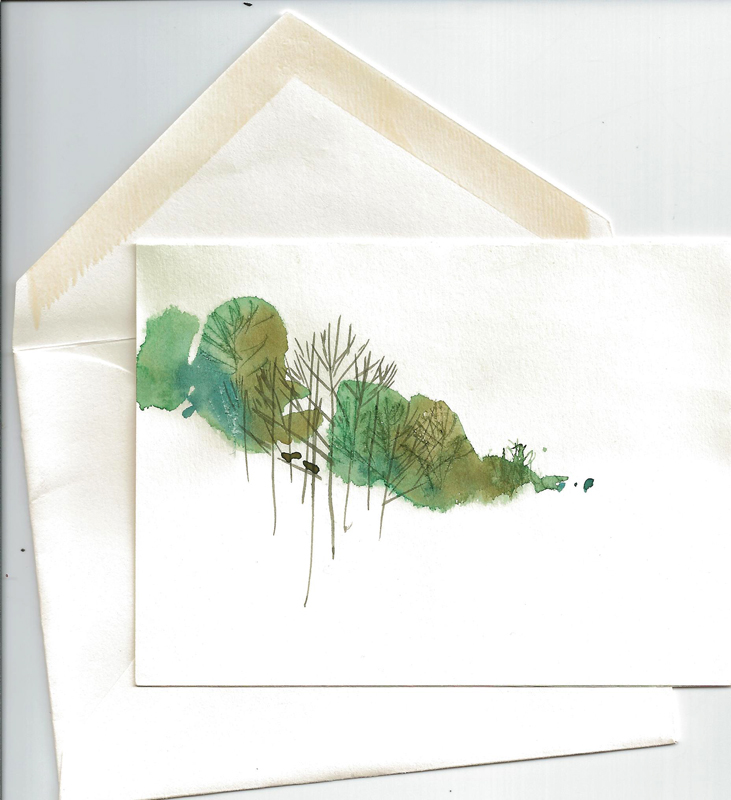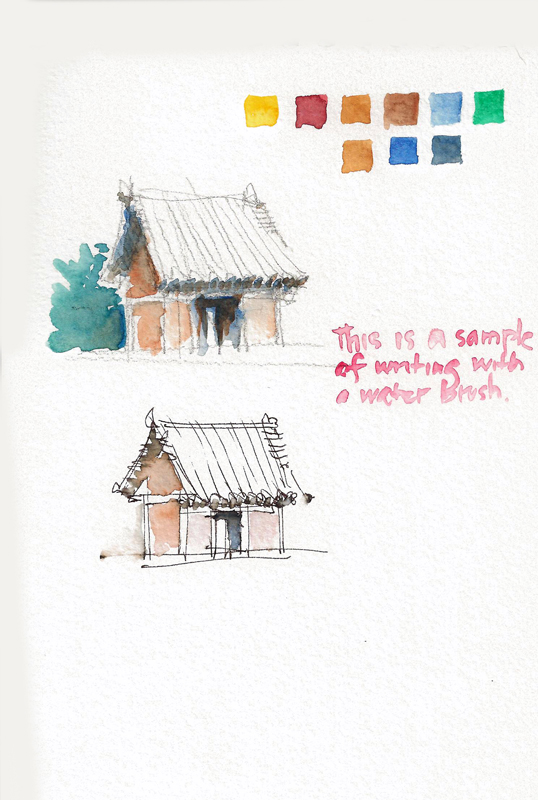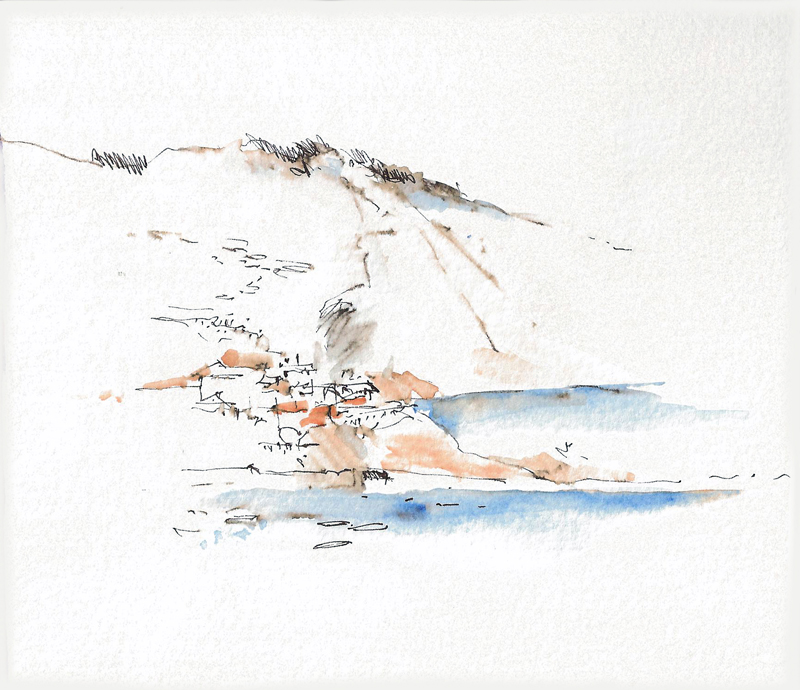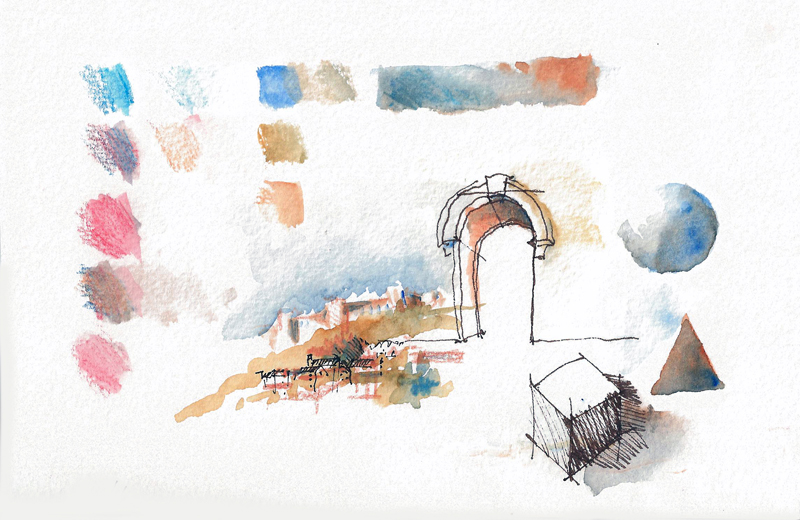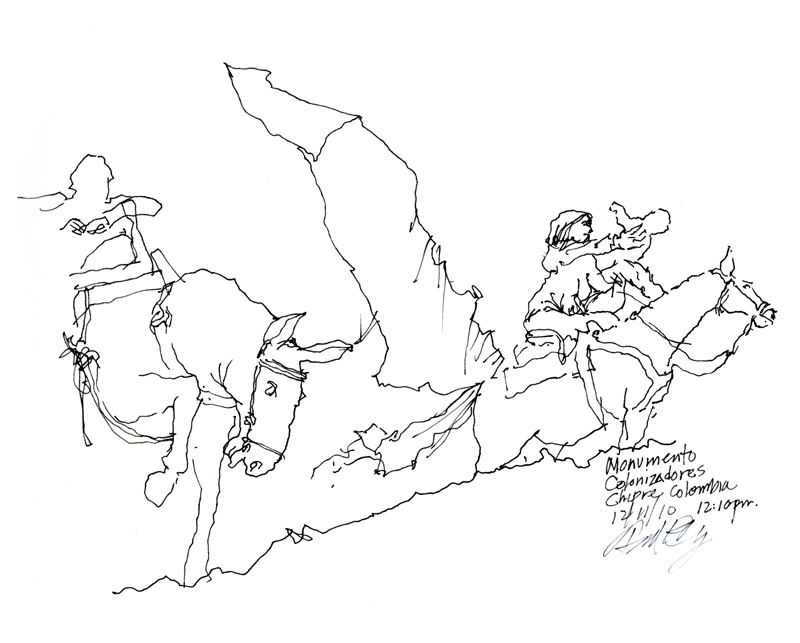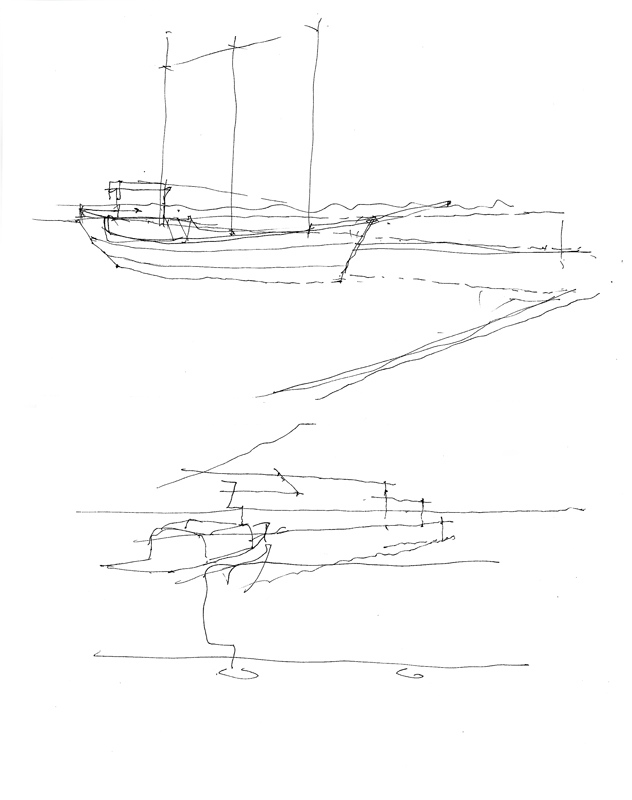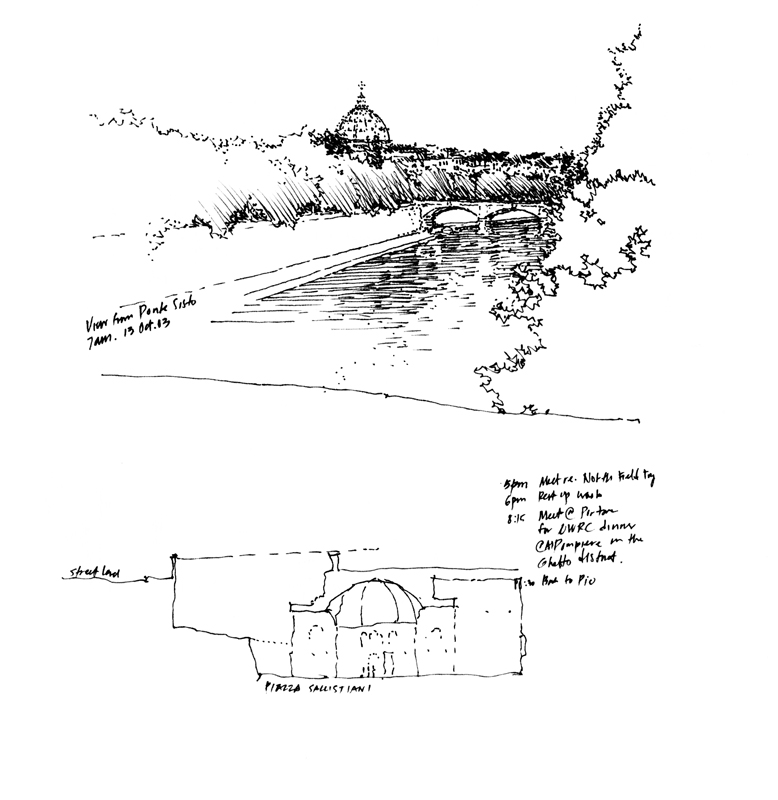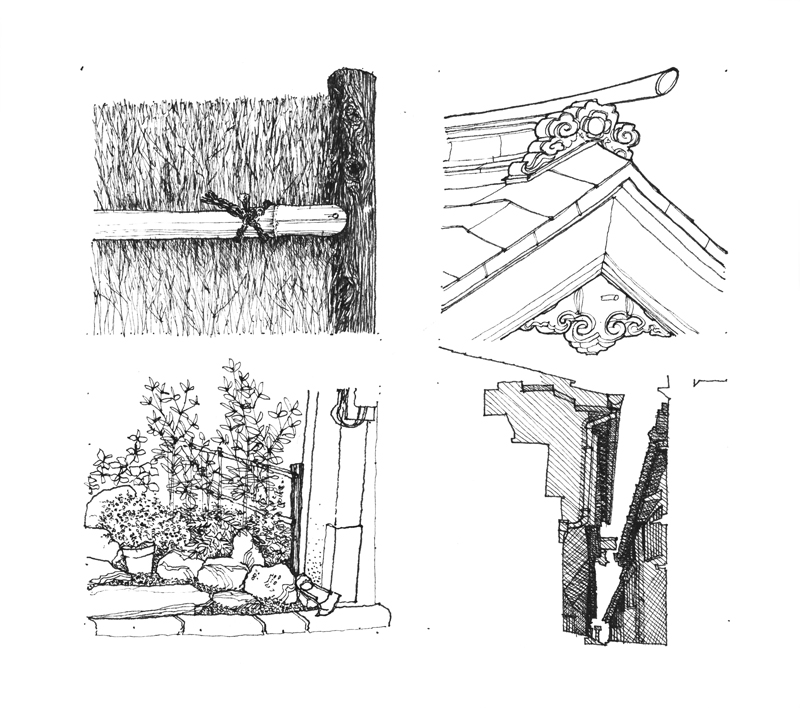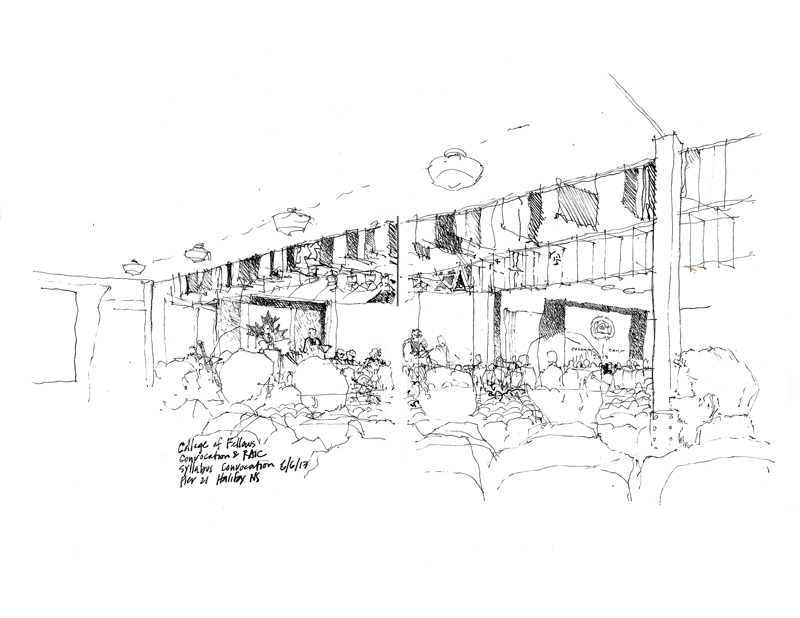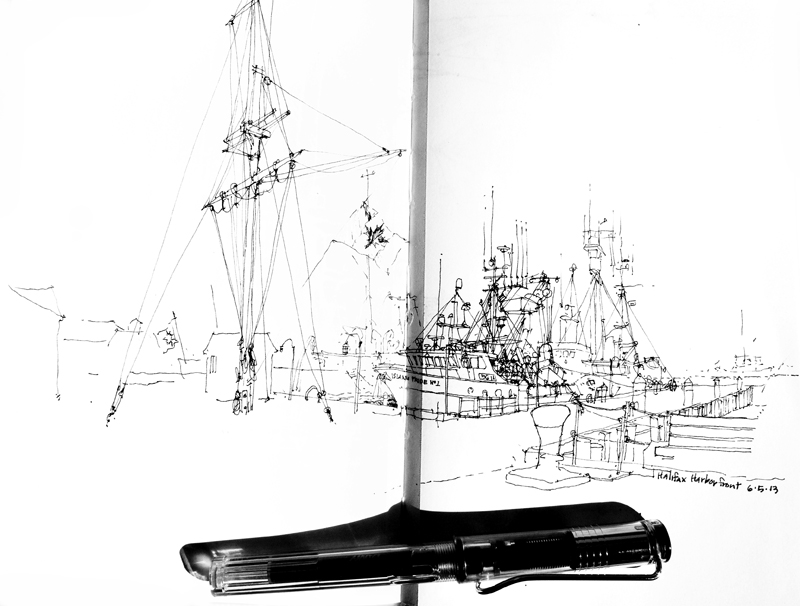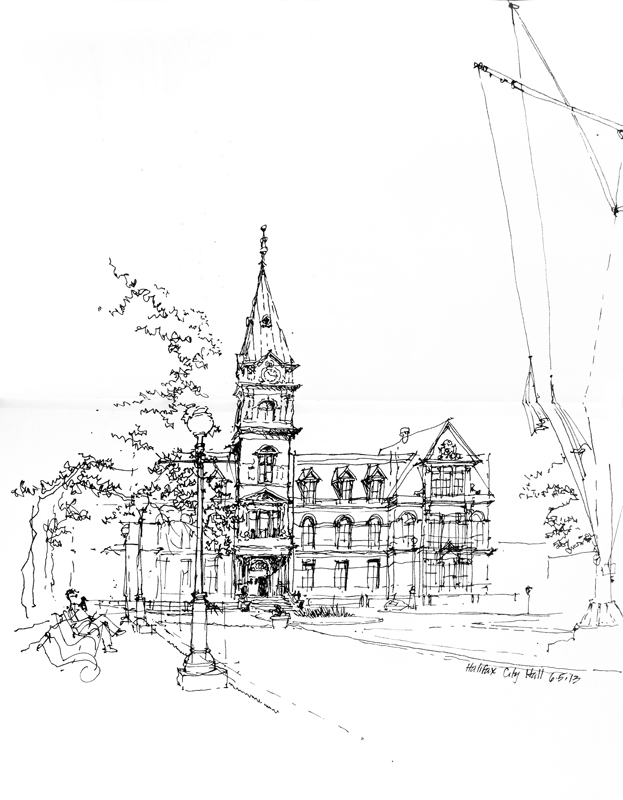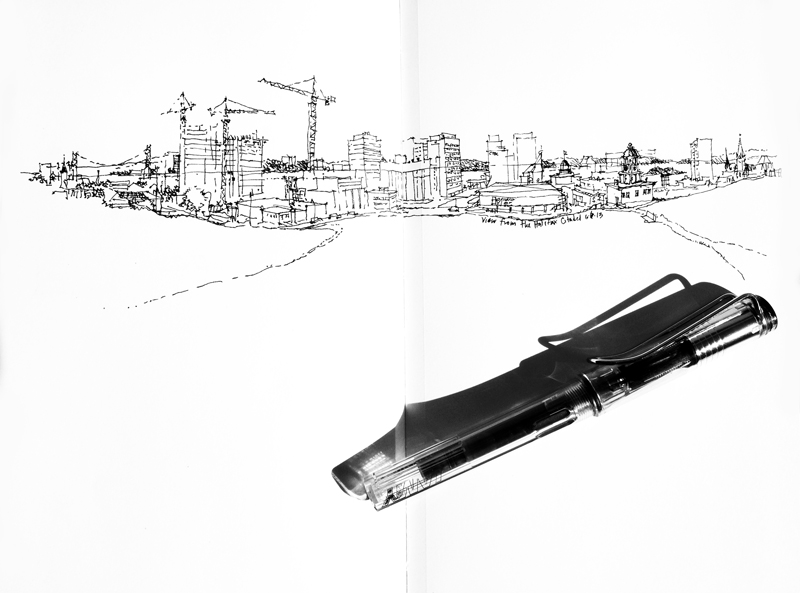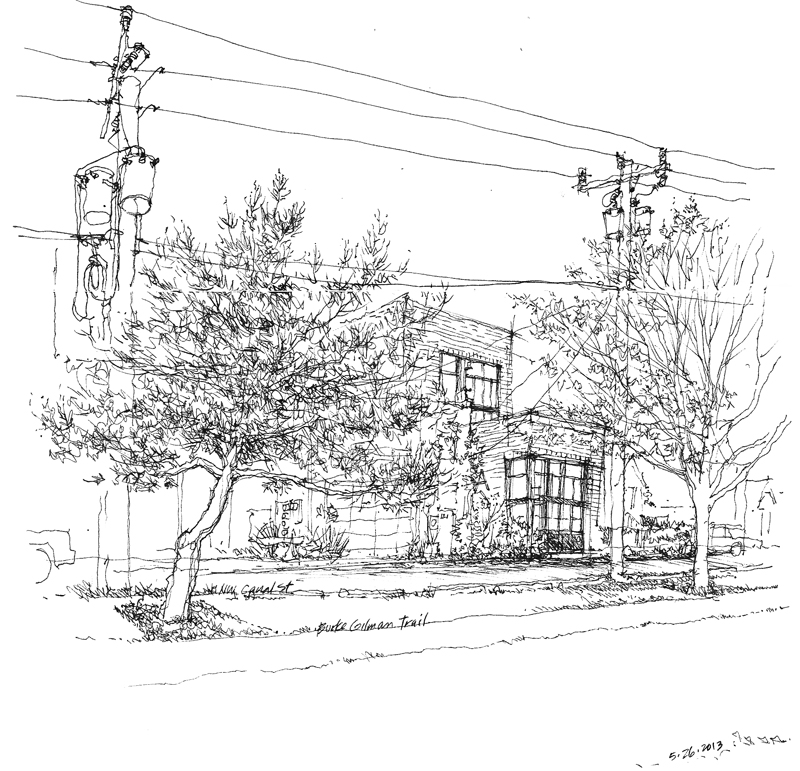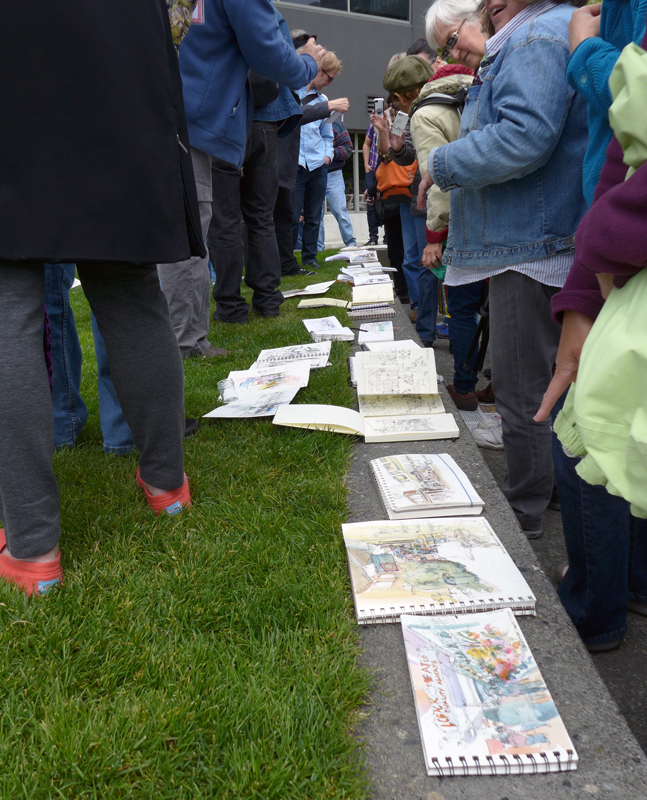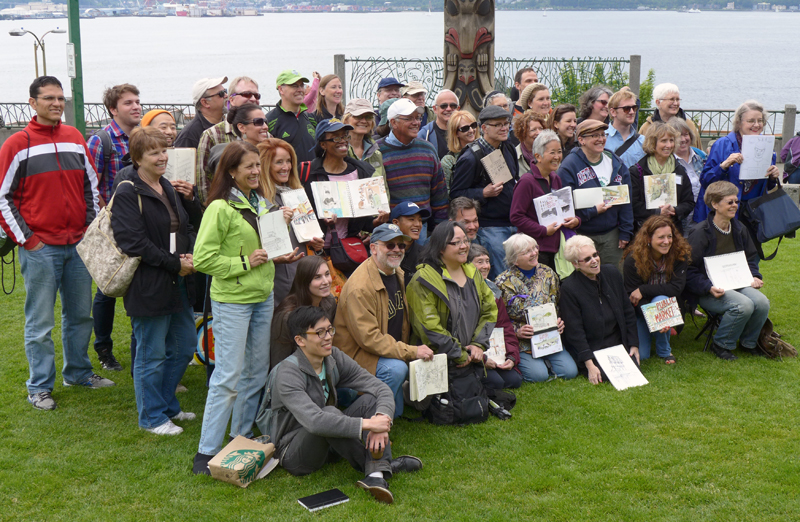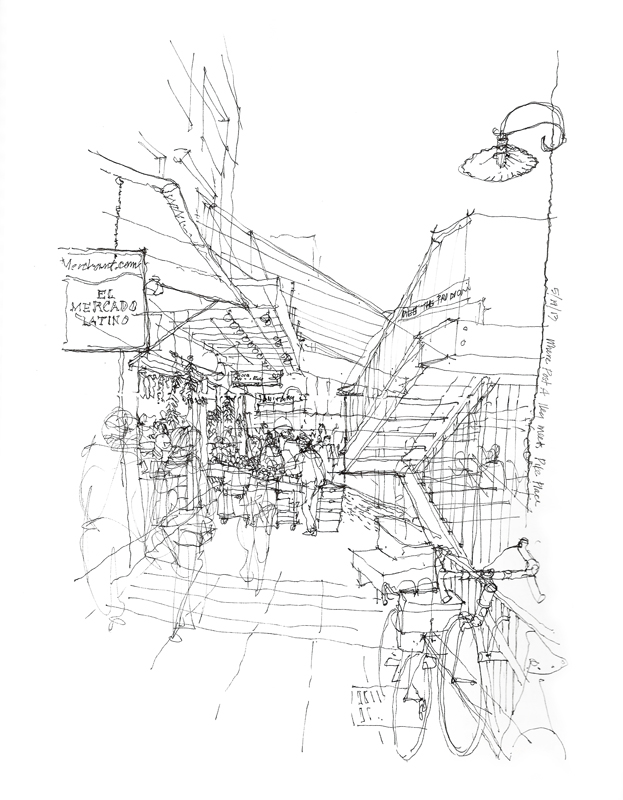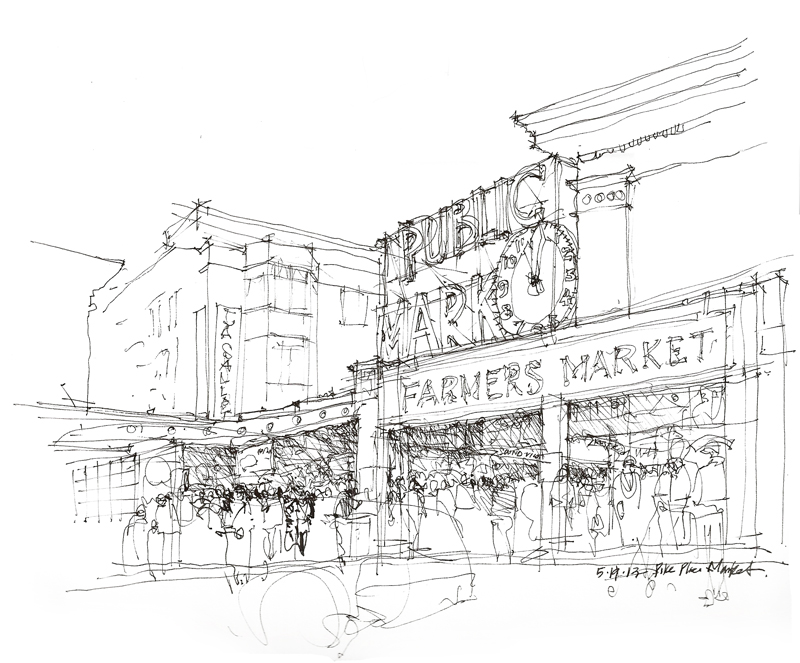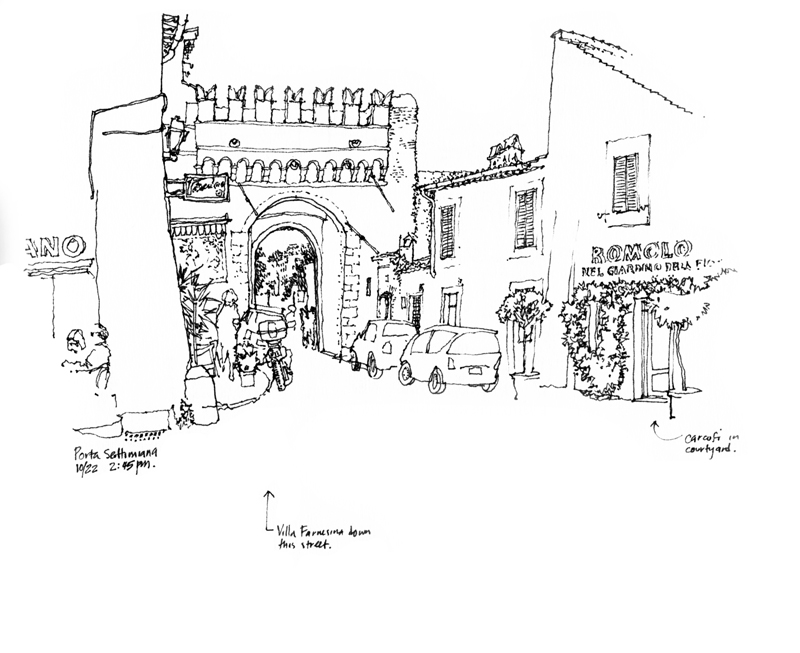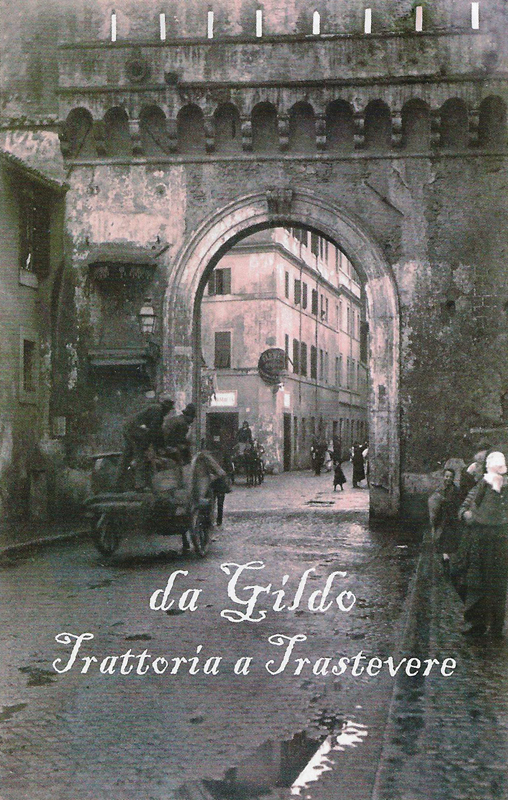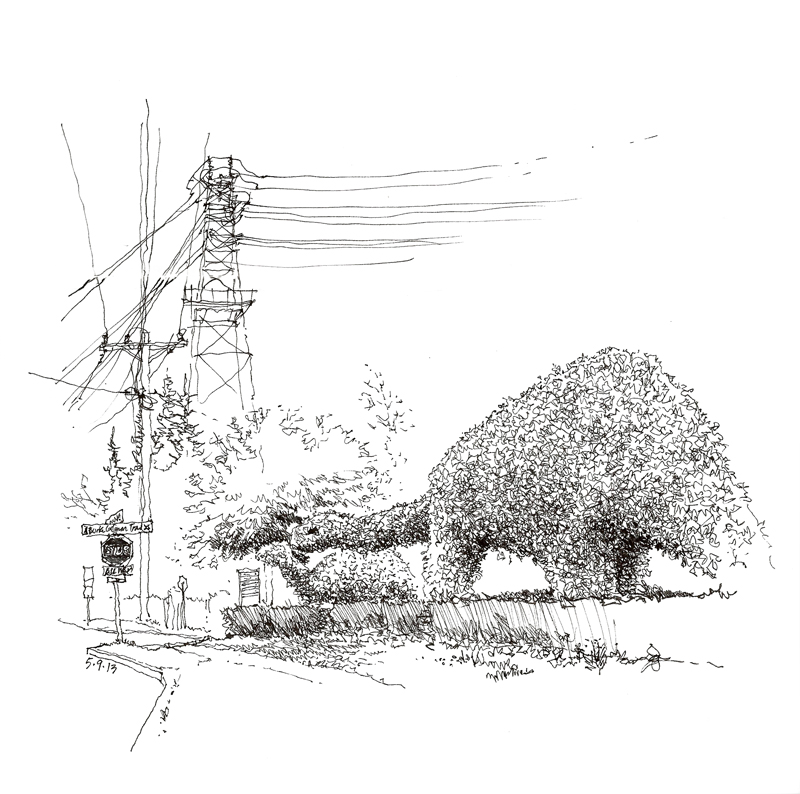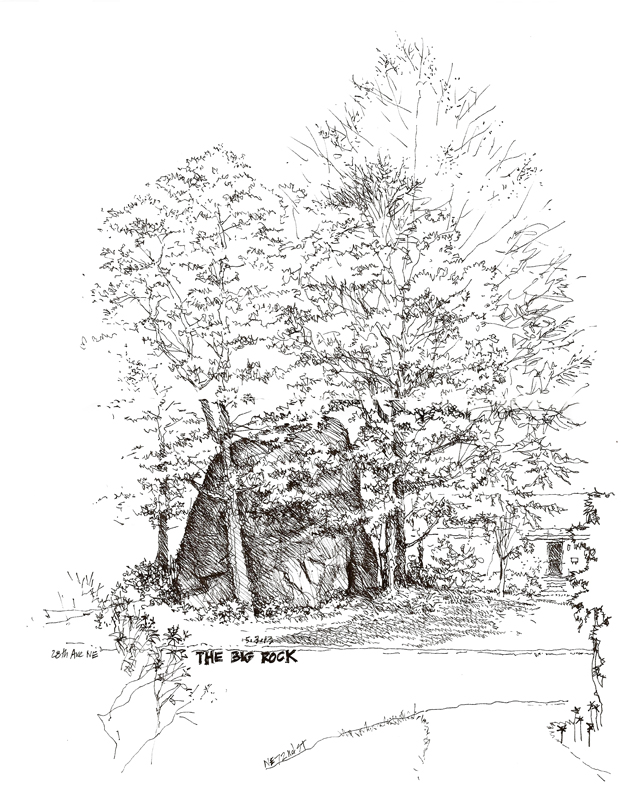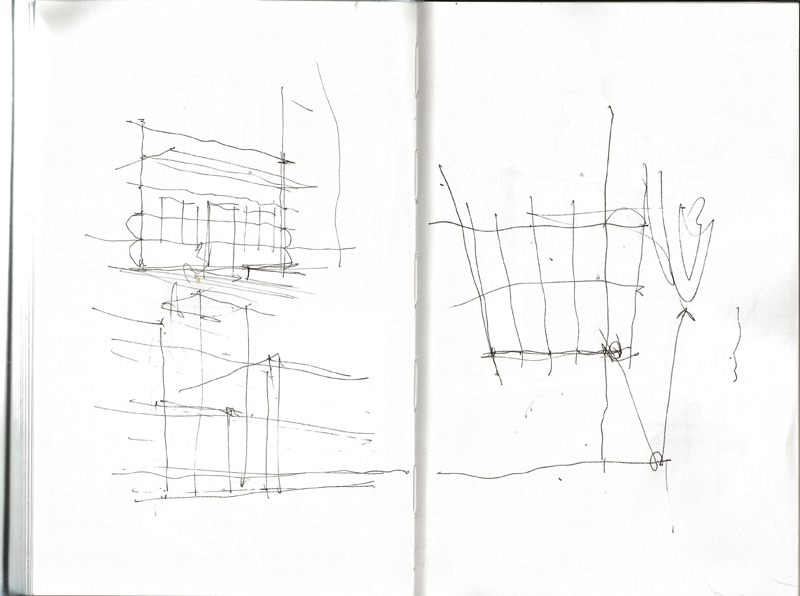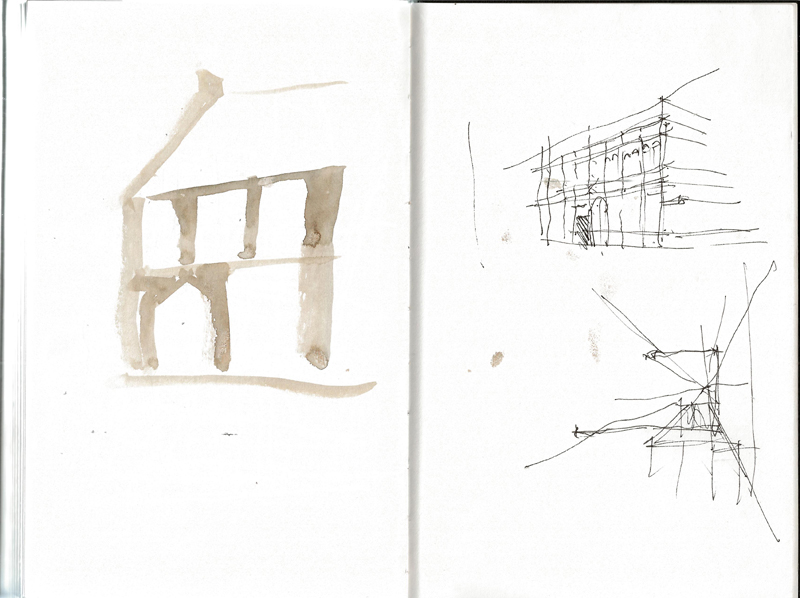I’m still unpacking from our recent move and in the seemingly never-ending process, I discovered this Christmas card I had done in the late 1960’s. It reminded me of how I would take a few minutes to hand-paint these, one at a time, and send them to family and friends as holiday greetings—in the pre-digital age.
It seems that the majority of urban sketchers whose work I’ve seen use watercolors to render how they see their world and I sometimes yearn to incorporate watercolor again into my work. Yet I like the simplicity of a pen and paper and have not yet settled on a compact enough kit that is truly portable. Given the time, however, I periodically experiment with a very limited palette and the feel of a waterbrush. Here are a few of these experiments.

